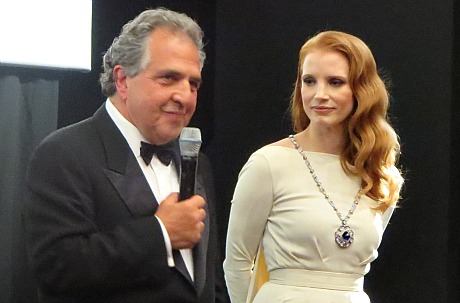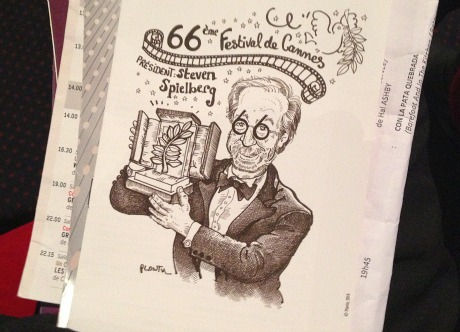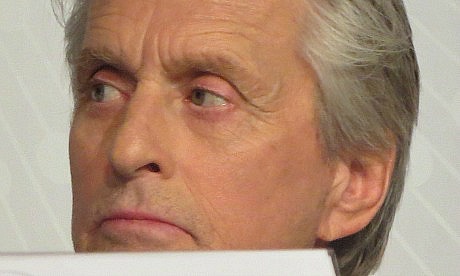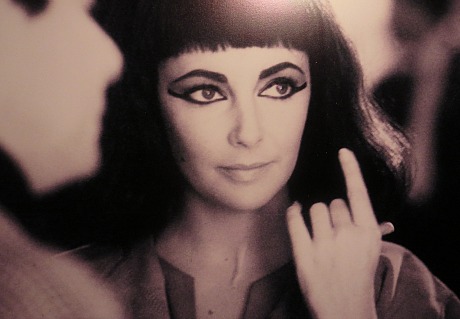Daily
Team Midnight
A good friend attended last night’s DGA screening of Richard Linklater‘s Before Midnight (Sony Classics, 5.24), which I’ve been constantly praising and plugging since catching it at last January’s Sundance Film Festival. She passed along a few snaps of director-writer Linklater and collaborators Julie Delpy and Ethan Hawke, who cowrote and costar as the same couple they played in Before Sunrise (’95) and Before Sunset (’04). Best long-time-relationship couple movie in ages.


Afraid Of Who I Was
In an Esquire interview, World War Z star-producer Brad Pitt takes himself to task for being a lackadaiscal slacker type in the ’90s, and says he didn’t really get on the stick until about ten years ago, or sometime around 2003. And the immediate result of this attitude change was Troy and Ocean’s 12, if you accept his chronology. I think Pitt really came alive when he did Babel, but that’s me.
“I spent years fucking off,” Pitt says. “But then I got burnt out and felt that I was wasting my opportunity. It was a conscious change. This was about a decade ago. It was an epiphany — a decision not to squander my opportunities. It was a feeling of get up. Because otherwise, what’s the point?
Stink Spreads All Over
Movies really don’t get much worse than Nicholas Winding Refn‘s Only God Forgives. It’s a shit macho fantasy — hyperviolent, ethically repulsive, sad, nonsensical, deathly dull, snail-paced, idiotic, possibly woman-hating, visually suffocating, pretentious. I realize I sound like Rex Reed on one of his rants, but trust me, please — this is a defecation by an over-praised, over-indulged director who thinks anything he craps out is worthy of your time. I felt violated, shat upon, sedated, narcotized, appalled and bored stiff.

I hate all that cheap Asian macho shit to begin with (seething rage, swords, vengeance, territoriality, kickboxing, bloodlettings) and this rancid fantasy wank pushed all the bad buttons from the get-go. I sat there seething, my teeth grinding. Thank God it lasted only 90 minutes.
Wednesday Drill
This morning’s 8:30 am screening is Nicholas Winding Refn‘s Only God Forgives, which at least seems to promise a world-class Kristin Scott Thomas performance. Ryan Gosling reportedly wont be here for the 11 am press conference — he’s directing his first film and can’t get away. I’m also catching Mahamat-Saleh Haroun‘s Grigris at 4 pm. And J.C. Chandor‘s All Is Lost (hors competition) at a 7:30 pm black-tie Salle Bazin screening followed by an after-party.
Cleopatra Peek-In
For whatever reason Jessica Chastain, here in Cannes on a promotional venture I’ve yet to learn the nature of, was asked by Fox Filmed Entertainment chairman & CEO Jim Gianopulos to offer a few remarks before tonight’s Salle du Soixantime screening of the digitally restored Cleopatra (’63). Nebraska director Alexander Payne also attended the black-tie event, along with Laura Dern (are they “happening” or are they just pallies based on Dern having starred in Payne’s Citizen Ruth way back when?).


Fox Filmed Entertainmetn chairman & CEO Jim Gianopulos, Jessica Chastain at Salle du Soixantieme earlier this evening.

Decapitated Giraffe
“At times it’s debatable whether The Hangover Part III should even be considered a comedy at all, as it more often plays like a loopily plotted, exposition-heavy actioner. Despite a career-long devotion to lowbrow comedy, director Todd Phillips displays a deft touch for the various jail breaks, heists and car chase sequences that arise here, while the film’s attempts at basic comic banter wither on the vine. One wonders how he would fare directing a straight genre project in which he could use dark humor to spice up the action beats, rather than the other way around.” — from review by Variety‘s Andrew Barker.
Max Rose Sampler
Password: maxrose.
Oh, Those Muttonchops
James Mangold was the crown prince when Walk The Line came out and rocked in ’05. And then came 3:10 to Yuma, which I remember more for its frustrations than satisfactions. And then Knight and Day, which I recently re-saw and liked a lot more than I did the first time. And now his Wolverine-in-Japan movie, the third genre flick in a row. The next one has to step off that treadmill.
Candelabra Counts
Of all the major directors of the past 20 years, Steven Soderbergh has always seemed the least emotional. His movies certainly never take a bath in the stuff. So it doesn’t sound like much to call Behind The Candelabra (HBO, 5.26) his most emotional and touching work. But I don’t mean it lightly. This HBO movie (which will play theatrically in Europe) truly touches bottom and strikes a chord. It’s a sad (but not glum or downish), movingly performed drama about a kind of marriage that begins well and then goes south after five years. Richard LaGravanese‘s script is complex, fleshed-out and recognizably human at every turn, and performed with considerable feeling and vulnerability by Michael Douglas (easily the top contender right now for a Best Actor prize) and Matt Damon.

Behind The Candelabra star Michael Douglas during this morning’s Cannes Film Festival press conference.
Little Split Screen Action
In the view of Indiewire‘s Boyd Van Hoeij (how do you pronounce that?), James Franco‘s As I Lay Dying is “just passable,” which raises the question of whether this adaptation of William Faulkner’s 1930s novel “deserves[s] the honor” of playing under the Cannes Film Festival’s Un Certain Regard.
Pic is “not only an admittedly small-scale period movie but, at the same time, an ambitious artistic project on the more experimental end of the arthouse spectrum, with a good portion of the widescreen film divided up in split-screen, offering possibilities such as side-by-side shot/reverse shots; simultaneous wide shots and close-ups and fascinatingly merged or altogether new soundscapes.”





